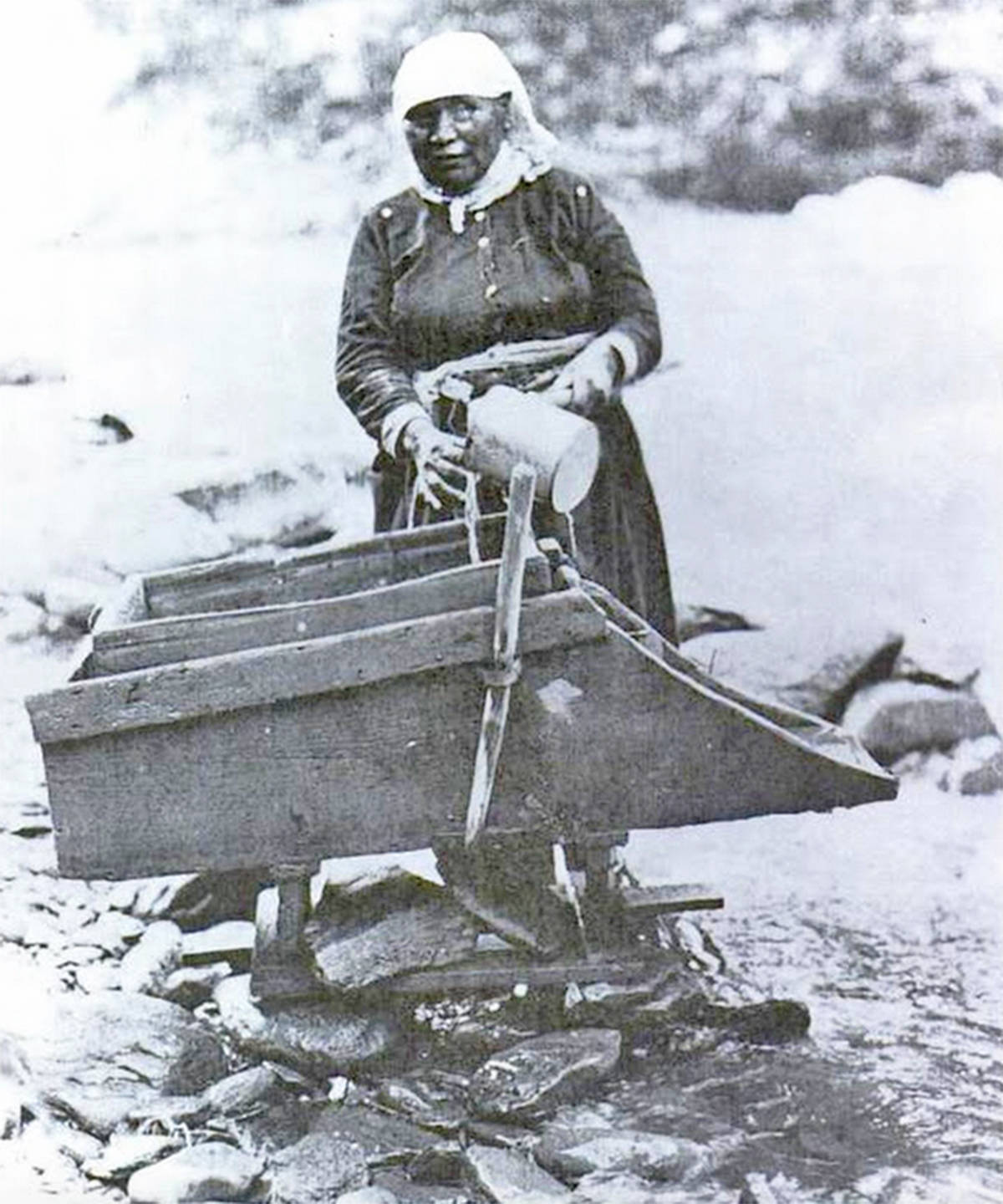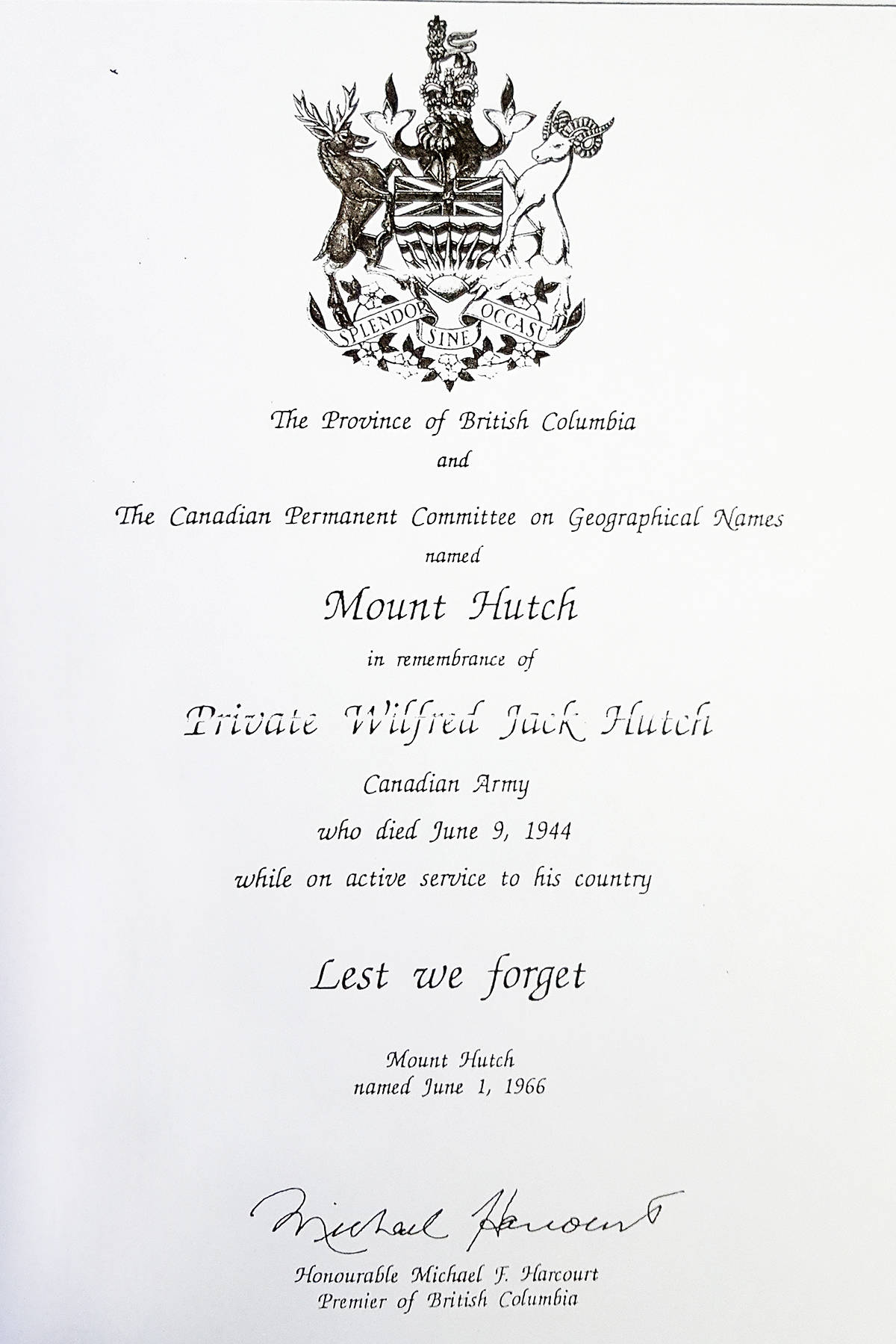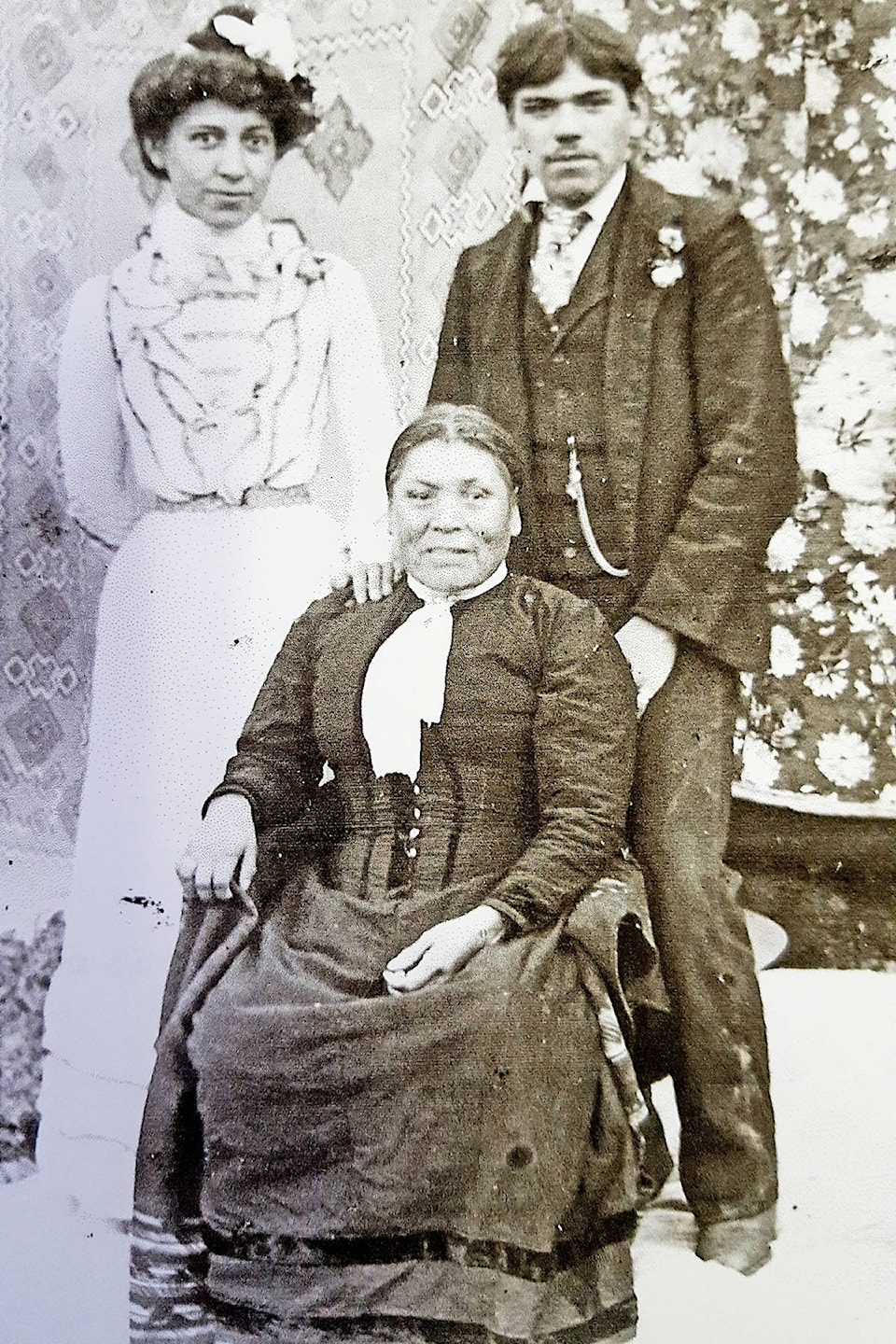By Marie Elliott and Dale Hunchak
Special to Black Press Media
Wilfred Jack Hutch signed his Canadian Scottish Regiment recruitment papers at Williams Lake on Feb. 26, 1941.
A Cariboo boy, born at Keithley Creek on the pioneer Robert Borland ranch, his grandmother was from the Sechelt First Nation and his grandfather was Borland’s business partner, George Vieth. Wilfred spent his early years in the vicinity of Cariboo and Quesnel lakes, hunting and fishing. At the time that he joined up he was thirty years old, married to Rosalie (nee Petrowitz), and working on the Roberts Dairy Farm at Williams Lake. He planned to take up cattle ranching when he returned to Ochiltree after the war.
After various postings in B.C. at Vancouver, Victoria and Prince Rupert, Wilfred was transferred to Valcartier Camp, Quebec, in March 1942, and three months later embarked for Scotland on June 25. Upon arrival he was stationed with the Canadian Forestry Corps at Clashmore near Dornach. During the next five months he moved amongst three different companies until transferred back to the Canadian Scottish Regiment on November 13. There is no indication where he spent the winter but as early as July 1943 he began rigorous training in preparation for D-Day in June 1944.
The massive deployment of 156,000 Allied Troops to Normandy’s Beaches on D-Day was planned meticulously because the Allies did not want another Dieppe disaster. In the two years since Dieppe, better vehicles had been designed such as the amphibious tank that could “swim” from the landing craft to the beach, the flame throwing Crocodile, and the Crab that beat the ground, setting off mines and ripping up wire ahead of the landing troops. Better support strategies included heavy bombing of German bunkers and gun emplacements ahead of time. Good moonlight for parachute operations and bombing, calm waters, and a flood tide were important.
There were numerous mock landings on beaches along the south coast of England to test the strategies. As D-Day neared the soldiers were deployed at embarkation points along the south coast opposite Normandy. On May 30, 1944, the men were issued assault paraphernalia, including life belts, sea sickness tablets and sick bags, along with their pay in French Francs. The Canadian Scottish boarded assault ships on June 3rd. They remained on board for three days while Supreme Commander General Eisenhower pondered the exact date. The calmest weather would be on June 6th. That would be D-Day.
Nine miles of the Normandy Coast had been selected as the invasion site for the combined forces of American, British and Canadian troops. The section designated for the Canadians was called Juno Beach. Nearly 8,000 Germans were dug in waiting for them. The tide was so high that most of the Canadian Scottish leaped from their landing craft onto the beach without getting wet. It took two hours to overcome the beach defences, but by this time some infantry groups were already far inland and “substantial progress had been made towards the next objective.” On the brigade’s right, 1 Canadian Scottish C Company’s initial advance against the German 441 Battalion was relatively easy because “the enemy had been badly dislocated by the naval and air bombardment in the Vaux area.” However, by advancing so quickly they had left their reinforcement unit far behind.
On D-day plus 1 Captain James [B Company of the Royal Winnipeg Rifles] and his men advanced inland to Putot-en-Bessin and dug in at the edge of an apple orchard preparing a counterattack. The next morning, June 8, the 2nd Battalion of the 26th S.S. Panzer Grenadier Regiment stormed the Winnipeg’s defensive area, and by early afternoon captured Captain James and a number of others in his regiment.
Wilfred died of injuries received in the attack.
Wilfred Jack Hutch was one of more than 4,000 Allied Troops who died during the Normandy offensive. He is buried in the Canadian Military Cemetery at Beny-sur-Mer, France. Mount Hutch in the eastern Cariboo, named on June 1, 1966, honours this brave Cariboo soldier.
sports@wltribune.com
Like us on Facebook and follow us on Twitter


